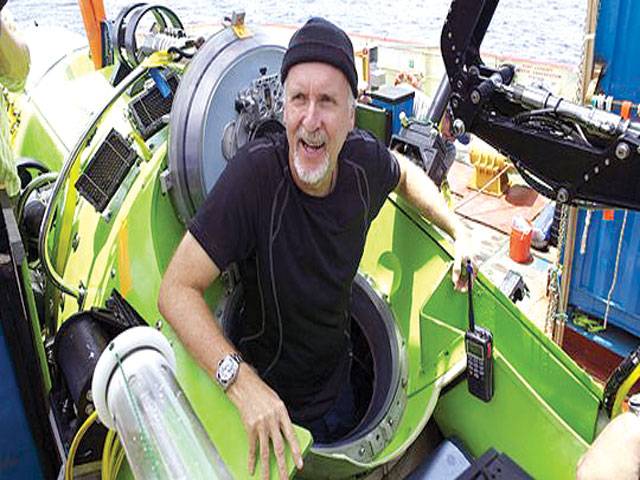THE sub that took Hollywood director James Cameron to the deepest place in the ocean is being donated to science.
On the first anniversary of his 10.9km solo descent of the Mariana Trench, Mr Cameron told the BBC that he was giving the Deepsea Challenger to the Woods Hole Oceanographic Institution, US. Initially, parts will be used as add-ons for other subs, but the entire system could dive again in the future.
Mr Cameron said he would like to return to the controls himself at some point. “I’d like to go dive the sub again,” he explained. “There are a number of really, really interesting science targets out there. I would love to see the Deepsea Challenger dive in the Tonga Trench, the Kermadec Trench and the Sirena Deep (a 10.7km-deep part of the Mariana Trench).”
The director said that the ocean was a vast unexplored frontier, but that funding cuts were now jeopardising research. When Mr Cameron made his dive in 2012, he became the first person to reach the bottom of the Mariana Trench, which is in the western Pacific Ocean, for 50 years - and the only person to have ever made the descent alone.
The only previous manned dive to this deepest spot, called the Challenger Deep, was carried out by US Navy Lt Don Walsh and Swiss oceanographer Jacques Piccard. They took the plunge to the deepest point in the ocean in a bathyscaphe called Trieste in 1960.
It took Mr Cameron just two hours to reach the seafloor. While his bright green submersible moved through the water like a vertical torpedo, the director was squeezed into a tiny chamber that kept him safe from the colossal pressures that exist almost 11km down.
While at the bottom, he spent several hours exploring the seafloor. 3D cameras captured images for a National Geographic film that is being released later this year. He told the BBC that donating the vessel to the Woods Hole Oceanographic Institution (WHOI) would give the sub “a second phase” of life after the dive. He said that funding was so scarce that plans to take the vehicle on a second series of dives had not been possible.
He explained: “I’d love to keep the Deepsea Challenger continuously operational. But I think that what I’m going for right now is what I call ‘potentially operational’. The way to do that is to preserve the hardware 100%, which we’ll do, but more importantly to preserve the culture of the engineering.
“My hope is with the sub’s home now at Woods Hole, there will be a residential team in place - and they will have the knowledge of how to bring that sub back online.” WHOI is one of the world’s foremost research centres dedicated to ocean science. It already operates a a number of submersibles including the famous Alvin vehicle.
Initially, Woods Hole will use some of the components in Mr Cameron’s sub to supplement its own vessels.
The lights and cameras from Deepsea Challenger will be installed on Nereus, an unmanned underwater vehicle that has also explored the Mariana Trench.
Dr Dave Gallo, director of special projects at WHOI, said the next stage would be to work out what other technology might be of use - and whether the submersible could be used again.
He added: “It is for one person, so you would have to have someone trained to do it - and we are looking very closely at every option.” –BBC
Saturday, April 20, 2024
James Cameron’s sub given to science

Heavy rains claim 98 lives, 89 injuries, across Pakistan: NDMA
1:21 PM | April 20, 2024
Watercourse project to help increase crop yields in Punjab
12:57 PM | April 20, 2024
Justice Ishtiaq Ibrahim sworn in as PHC chief justice
12:54 PM | April 20, 2024
Policitising Tragedy
April 20, 2024
Tehran to Rafah
April 20, 2024
A New Leaf
April 20, 2024
A Tense Neighbourhood
April 19, 2024
Dubai Underwater
April 19, 2024
Dangers of Deepfakes
April 20, 2024
Feudalism
April 20, 2024
Kite tragedy
April 19, 2024
Discipline dilemma
April 19, 2024
Urgent plea
April 19, 2024
ePaper - Nawaiwaqt
Advertisement
Nawaiwaqt Group | Copyright © 2024





